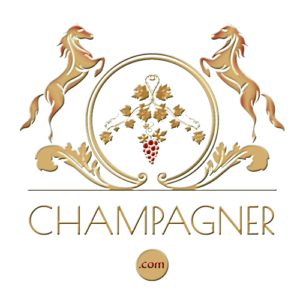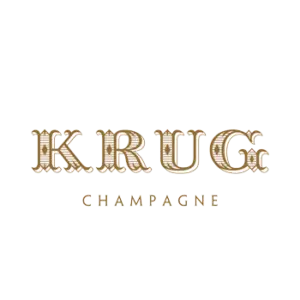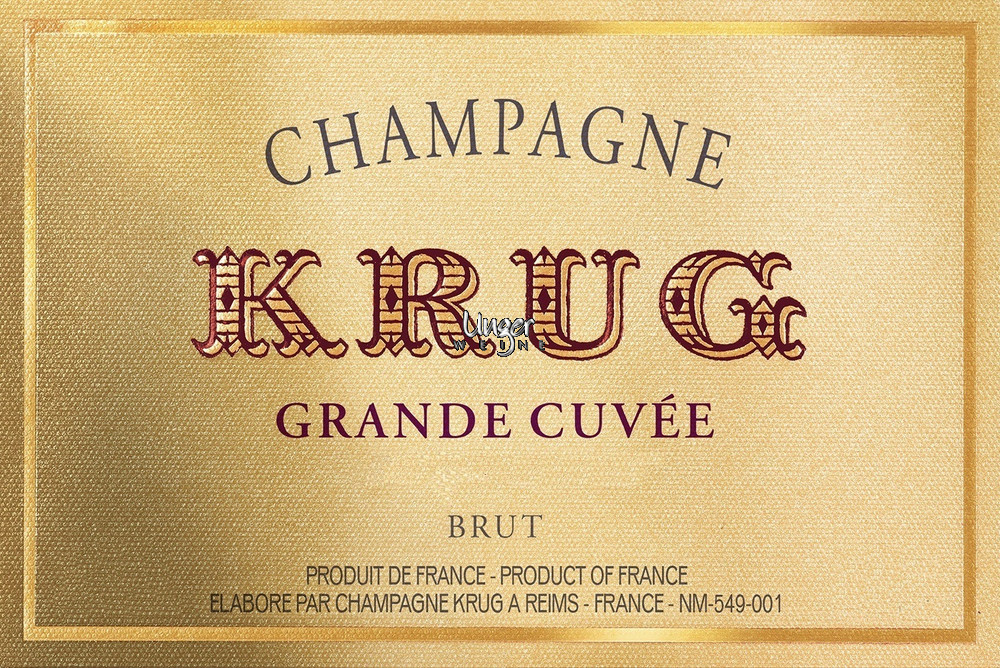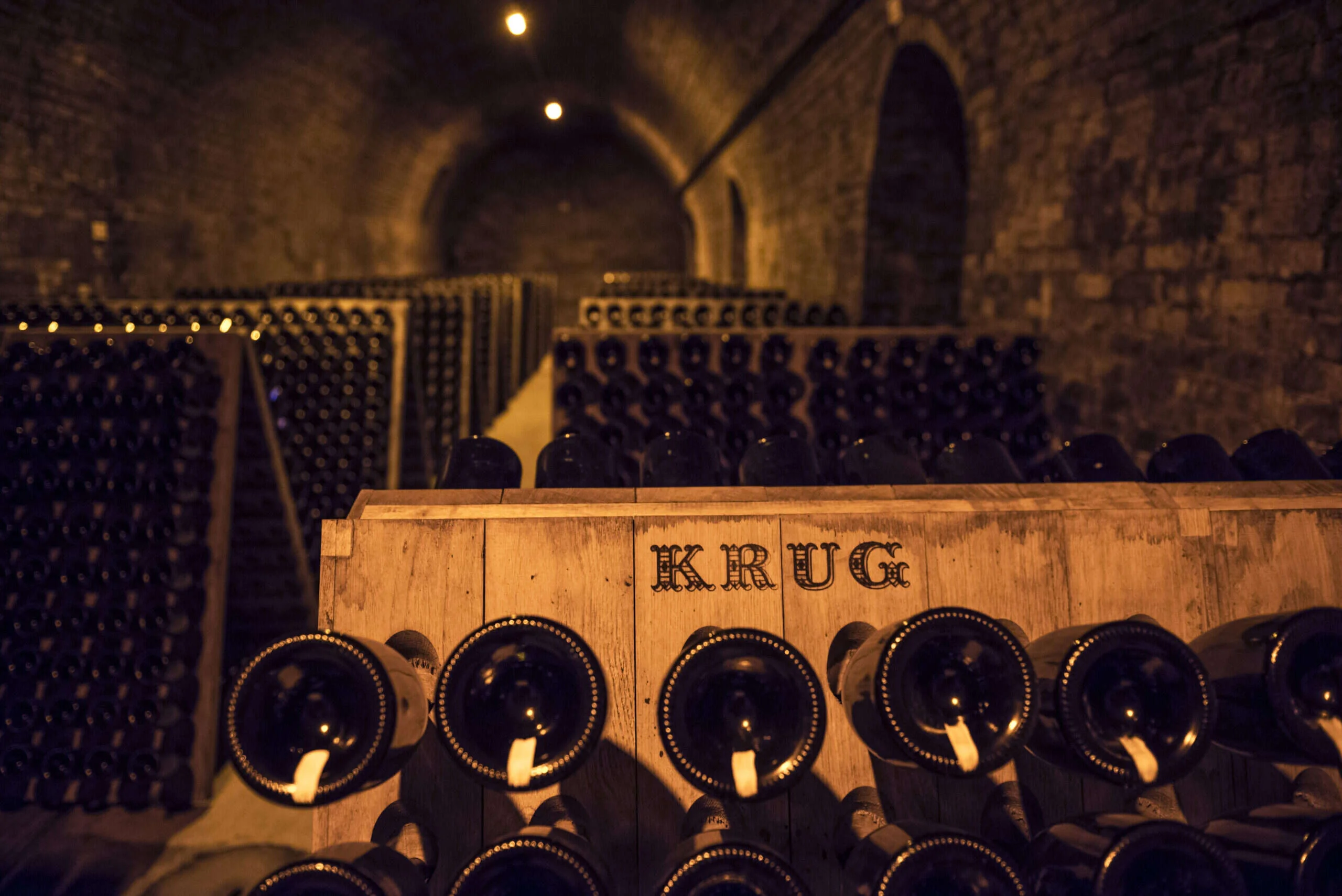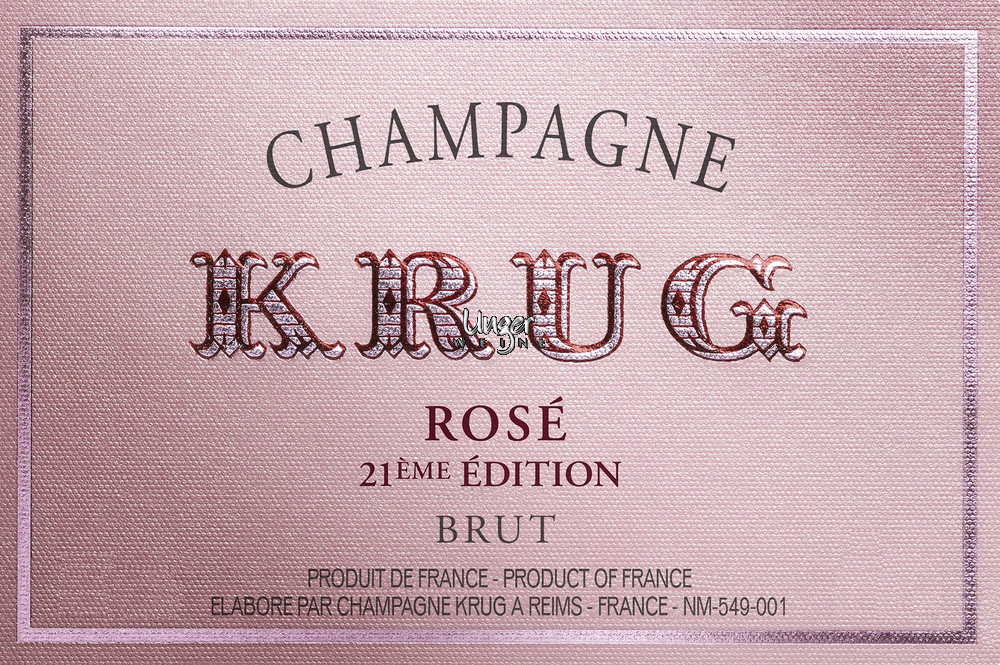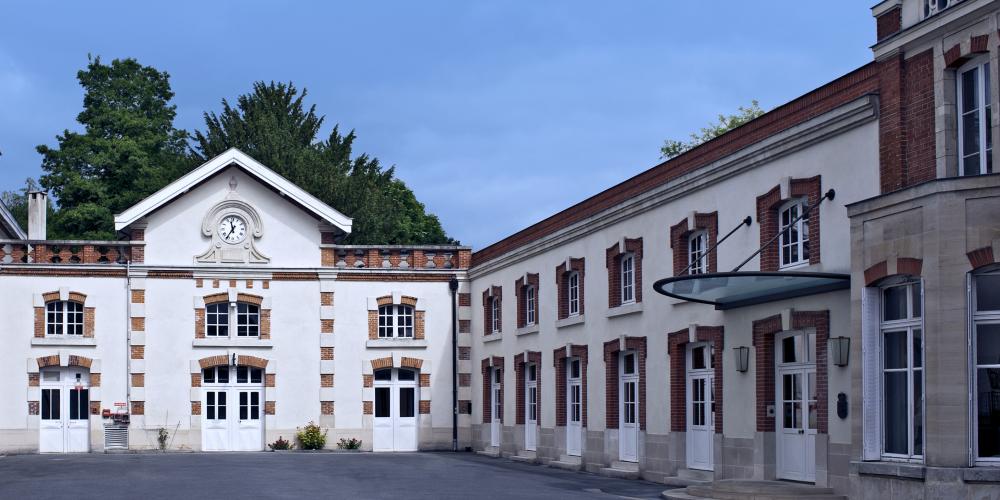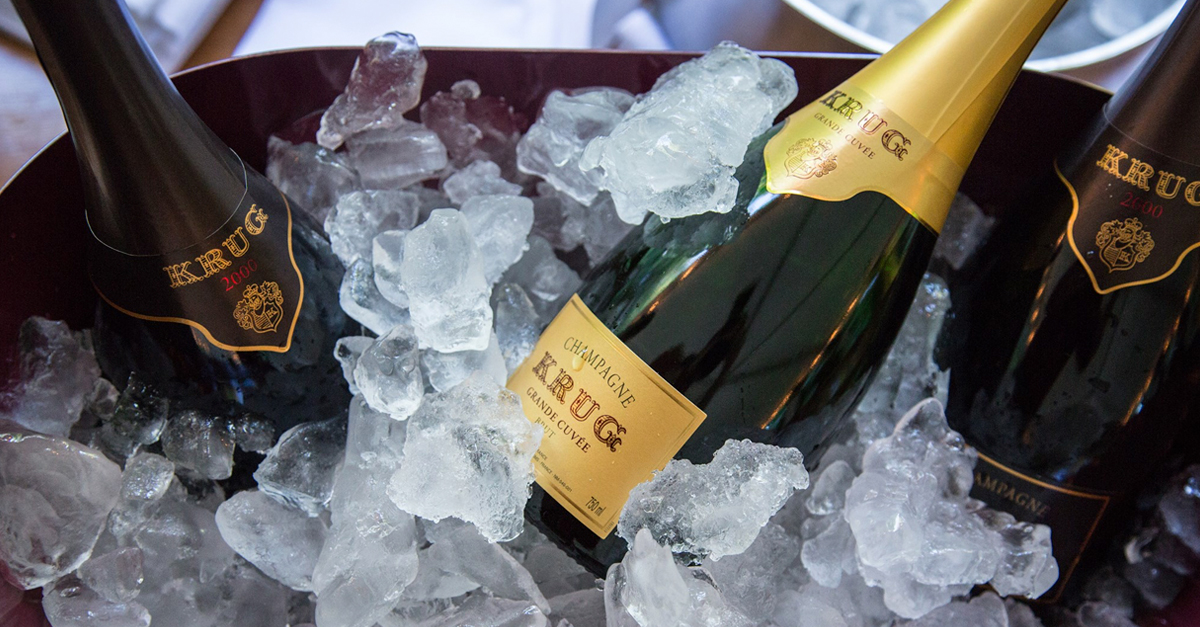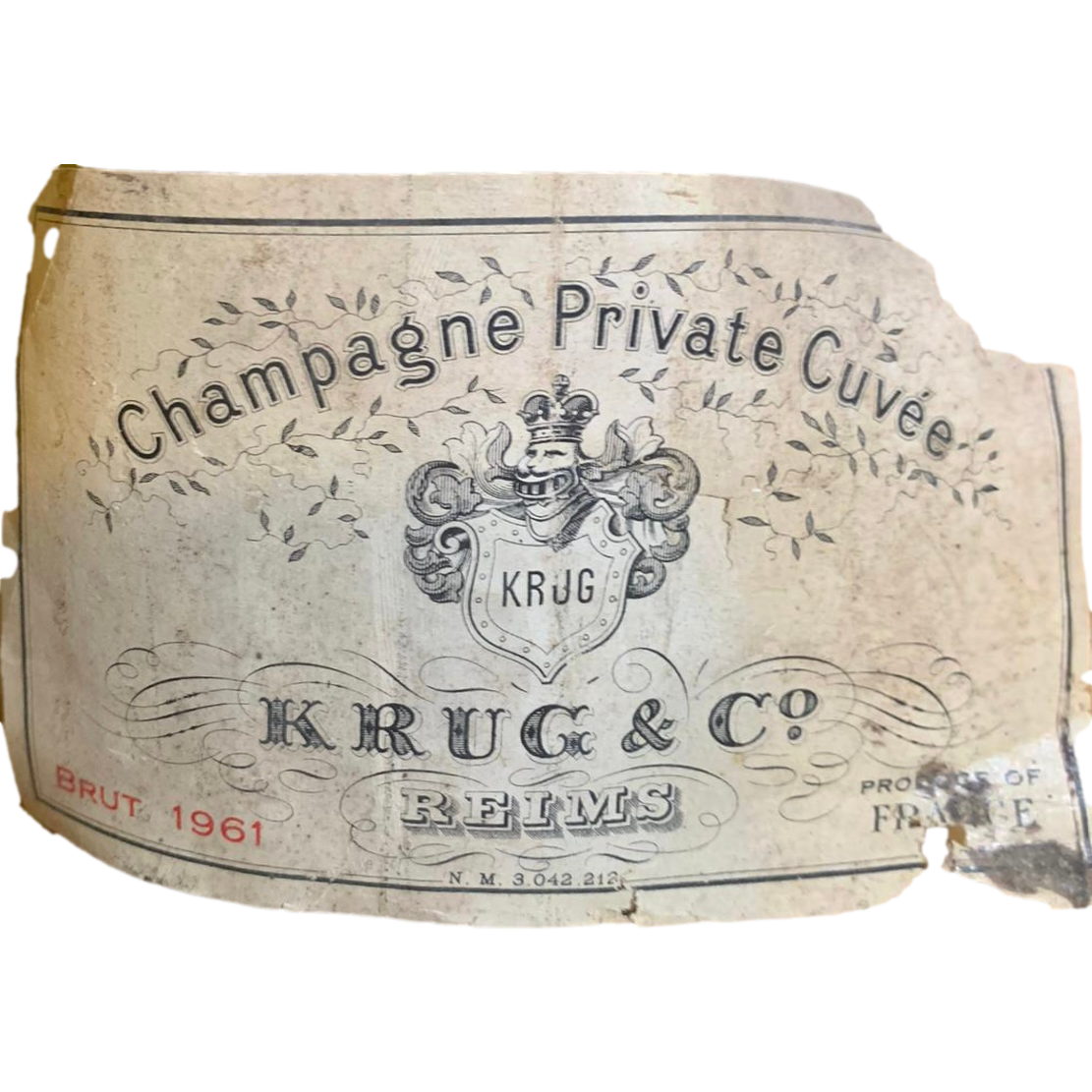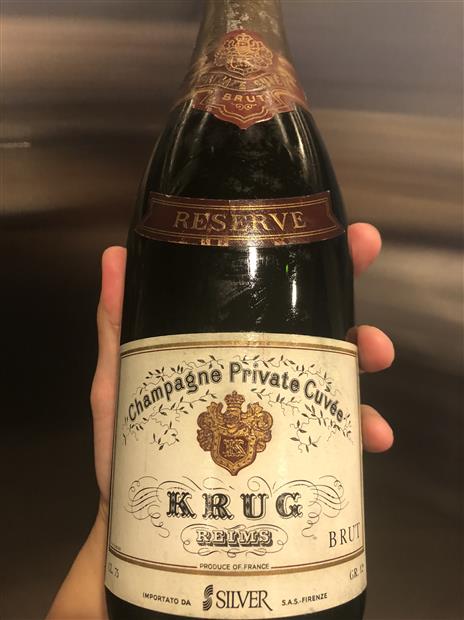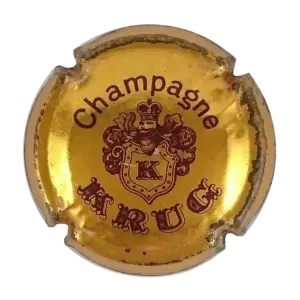Krug Champagne
Krug Champagne: A masterpiece of the Champagne art
Foundation and history
The history of the Krug champagne house begins in 1843, when Johann-Joseph Krug, a native of Mainz, founded the company in ReimsFrance. Johann-Joseph Krug, who previously worked at Jacquesson & Fils, a renowned champagne house, decided to realise his vision of an exceptional champagne. Champagne to realise his vision. With a deep understanding of viticulture and a passion for quality, he created a brand that is still synonymous with luxury and excellence today.
Johann-Joseph Krug focussed on the highest quality and innovation from the very beginning. He introduced the practice of ageing the base wines in small oak barrels to give them additional depth and complexity. This tradition is still upheld today and is an essential part of the Krug philosophy.
Over the years, the company grew and achieved international fame. After the death of Johann-Joseph Krug, his son Paul Krug took over the company and continued to run it successfully. Under his leadership, Krug Champagne became one of the most prestigious champagne brands in the world.
Ownership and management
Today, Krug Champagne is part of the LVMH Group (Moët Hennessy Louis Vuitton), one of the world's leading luxury goods groups. Despite the change in ownership, Krug remains a family business in spirit, committed to preserving its traditions and values. Rémi Krug, a descendant of the founder, has played a crucial role in maintaining high quality standards and continuous innovation. The current cellar master, Eric Lebel, continues this tradition with great care and dedication.
Production and philosophy
Krug Champagne is known for its traditional and artisanal approach to champagne production. Around 500,000 bottles are produced each year, with each bottle being a testament to the dedication and expertise of the house. A unique feature of the Krug champagnes is the ageing of the base wines in wooden barrels that are around 35 years old. This method, which has become rare today, gives the wines exceptional depth and complexity.
Another characteristic feature of Krug champagne is the long ageing period. The wines are only sold when they are considered ready to drink. Nevertheless, Krug recommends leaving the bottles to rest for at least another year after purchase. This additional ageing period allows the champagne to develop its characteristic flavours and achieve a harmonious balance. Fresh wines can have a strong acidity, which becomes milder and rounder with proper ageing.
Best known Krug Champagne
One of the most famous and prestigious champagnes from Krug Champagne is the "Krug Grande Cuvée". This champagne, which is considered the flagship of the house, is a masterful blend of over 120 wines from more than ten different vintages. Each bottle of Grande Cuvée is the result of a complex and meticulous blending process aimed at creating a champagne of unrivalled finesse and elegance.
Another highlight in the Krug collection is the "Clos du Mesnil". This mono-cru champagne, a Blanc de Blancs, comes from a single, walled parcel in the famous Le Mesnil-sur-Oger vineyard. The Clos du Mesnil was first brought onto the market from the 1979 vintage and has since established itself as one of the best champagnes in the world. The vines of this single vineyard benefit from the exceptional climatic conditions and the unique terroir, resulting in a champagne of outstanding purity and minerality.
In addition to the Clos du Mesnil, Krug has another mono-cru champagne in its portfolio: the "Clos d'Ambonnay". This champagne, which is made from 100 % Pinot Noir, comes from a small, walled parcel in Ambonnay, one of the most prestigious Pinot Noir vineyards in the world. Champagne. The first vintage of Clos d'Ambonnay was produced in 1995, and the champagne is now considered one of the most exclusive and expensive on the market. In gourmet restaurants, a bottle can cost up to €4,500, which emphasises its rarity and exclusivity.
Current information on vineyards and headquarters
Today, the Krug Champagne House cultivates a large number of vineyards in some of the best locations in Champagne. The total area of vineyards used by Krug is around 20 hectares. These vineyards are spread over several Premier Cru and Grand Cru sites, including Le Mesnil-sur-Oger and Ambonnay, which are known for their excellent conditions.
The head office of Krug Champagne is still located in Reims, where the company has its historic headquarters. The property includes the original building acquired by Johann-Joseph Krug, as well as modern facilities that meet today's champagne production requirements. The combination of tradition and modernity is a central element of the Krug philosophy and is reflected in both the production methods and the architecture of the property.
Historical development and milestones
Since its foundation, Krug has achieved numerous milestones that have cemented its position as a leading champagne house. One of the most significant milestones was the launch of the Krug Grande Cuvée in 1971, which is considered Krug's signature cuvée. This champagne was developed to represent the unique style and philosophy of the house and has been in continuous production ever since.
Another important milestone was the takeover by the LVMH Group in 1999, which enabled Krug Champagne to expand its resources and strengthen its global presence without neglecting its traditional values and quality standards.
The introduction of the Krug Clos du Mesnil in 1986 and the Clos d'Ambonnay in 2007 are further outstanding events in the history of the house. These champagnes have established themselves as icons of the Krug collection and contribute significantly to the House's reputation as a producer of luxury champagnes.
Future prospects and innovations
Krug Champagne remains a symbol of excellence and innovation in the world of champagne. The House is continually committed to preserving its traditions while breaking new ground. This is reflected in the constant improvement of vineyard practices, the evolution of cellar techniques and the introduction of new cuvées that honour the House's heritage while setting new standards.
One example of Krug's innovative spirit is the introduction of the Krug ID. Each bottle of Krug Champagne carries a unique identification number that allows consumers to obtain detailed information about the specific blend, the year of bottling and the recommended drinking age. This transparency is a further sign of Krug's commitment to providing its customers with an unrivalled champagne experience.
To summarise, Krug champagne is an incomparable Champagne house characterised by its deep-rooted tradition, its unwavering dedication to quality and its capacity for innovation. With a rich history, iconic champagnes and a clear view of the future, Krug Champagne remains a beacon of excellence in the world of champagne.
Krug Champagne
5, rue Coquebert
Reims 51100
France
Phone: +33 3.26.84.44.20
https://www.krug.com/
